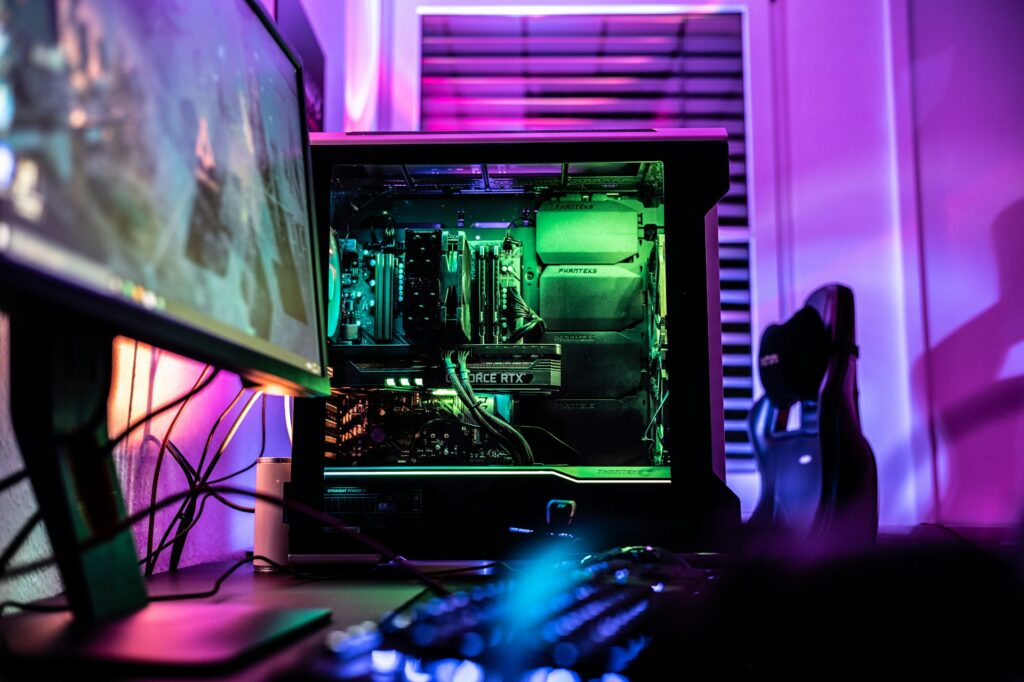Technology has changed everything. All industries benefit from the innovations and changes that come from tech. While video games are inherently a tech innovation of themselves, they’ve still changed throughout the years. Developments like artificial intelligence (AI) are the reason some of your favorite games are here today. These 5 examples of technology show how far gaming has come:
1. AR and VR
Altering reality is part of what makes video games so powerful. They’re a way to step into another world for a few hours and explore. Augmented reality (AR) and virtual reality (VR) have taken this experience to a new level.
You might remember the “Pokemon Go” craze in the summer of 2016. That game used AR to bring Pokemon characters into the real world. You’d use the camera on your phone and search until you found one.
VR, on the other hand, is about bringing you into a virtual world. Countless big tech companies like Facebook and PlayStation are creating VR headsets to offer new gaming experiences. If you want to play a game like “Half-Life: Alyx,” you can simply slip on your VR headset and jump right in.
These two fields are taking off like never before, projected to have grown by $3.5 billion by the end of 2020.
2. Motion Control
When motion control first came about, it was a big deal. One of the first mainstream instances of this form of control was with the Wii. When the console launched at the end of 2006, it brought with it controllers that needed your actions to play.
You may remember flying around the island on “Wii Sports Resort” or bowling and playing tennis on “Wii Sports.”
The Xbox Kinect came along a few years later and did away with controls. The camera on this gadget processed your motions and mirrored them for your character. Games like “Kinect Sports” and “Just Dance” became possible with just your movements.
Systems have since adapted and become even more efficient. The Nintendo Switch no longer requires the finicky motion sensor bar that the Wii required. Everything becomes simpler over time, but would not be possible without the original innovations.
3. Portable Gaming
Consoles used to be the one and only focus of the gaming industry. You could sit and play in an arcade or in your home, but then the idea of portability came around. Phones started getting games like “Candy Crush” and “Angry Bird” and suddenly, mobile gaming was a new gaming venture.
Consoles have been playing around successfully with downsizing, too, throughout the years. The Nintendo DS and PSP are common household consoles — especially for older generations. However, the Switch and Switch Lite have put more of an emphasis on portable gaming.
With Android and Apple investing in mobile gaming projects, that portability emphasis will most likely translate to mobile game developments.
4. AI
Artificial intelligence has been a subtle player in the field. Of course, plenty of AI and machine learning algorithms go into creating new video games. But what about AI in the actual gameplay?
One of the most notable examples of AI gaming is “Alien: Isolation” where the alien learned from the players’ moves and could alter its attacks based on that information. The dynamic made the game harder to complete, but also more engaging. Players had to find a way to outsmart the computer.
“No Man’s Sky” is another game that got off to a rocky start on its initial release. However, after a re-release, the AI now shines through. The game uses machine learning to generate new maps each time a player travels — meaning the possibilities are literally endless.
These games are gateways to what’s possible. Some of the most prominent names in gaming — like “The Legend of Zelda: Breath of the Wild” and “Dark Souls 3” — use AI. It’s what makes them so challenging and fun.
5. Streaming
One of the most recent of the five examples of technology in gaming comes at a time where people are turning to technology more than ever. The COVID-19 pandemic requires social distancing, quarantines and staying at home. These necessities are part of the reason streaming has become such a force.
A viewer can log onto Twitch or YouTube and watch their favorite streamer play games for hours. It’s become wildly popular, too — around 400,000 people tuned in to Twitch to watch Congresswoman Alexandria Ocasio-Cortez play “Among Us” in October 2020.
You could trace the origins of streaming back to online gaming. Things like “FarmVille” on Facebook used to be huge. “Minecraft,” too, is still relevant 12 years after its release. Playing these games online quickly turned into watching people play these games online.
Now, streamers can turn this venture into a profit. Some Twitch streamers make between $3,000 and $5,000 each month from donations, subscribers and partnerships.
What’s Next?
The gaming community is always pushing forward. Whether it’s something that starts small and leads to new standards, like motion control, or the use of AI to engage players — gaming is on top of the latest trends.
These five examples of technology in gaming show how powerful the field is. What comes next could be anything. However, it’s likely that AR, VR and streaming are on track to become power players for gaming. Happy playing!
Recent Stories
Follow Us On
Get the latest tech stories and news in seconds!
Sign up for our newsletter below to receive updates about technology trends














